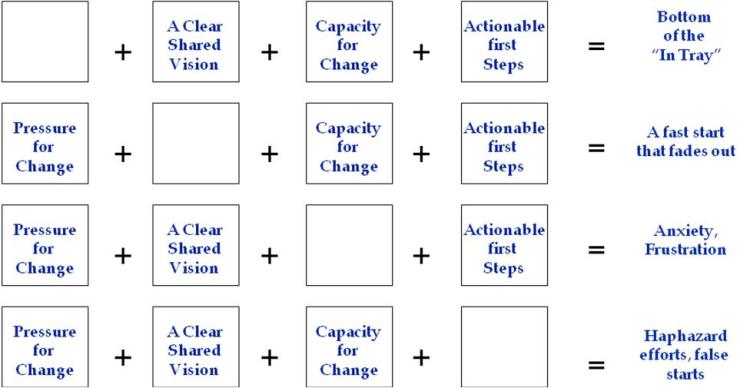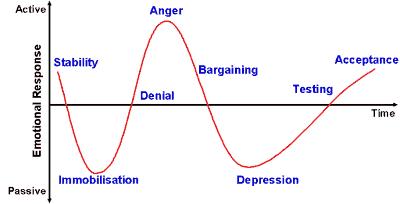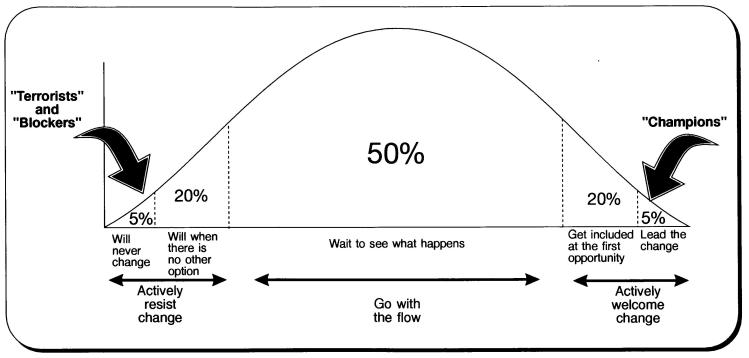I generally use two types of Change Management Model when working with clients:
1. Models to help organisations implement change successfully
2. Models that help organisations understand the impact of change on individuals
The first type of model is used either to help diagnose why change isn’t going well, or (ideally) to help plan for it. My favourite is the “4-box model”:
One of my articles here describes the model in more detail.
The model is often shown as follows, to explain why change fails when one of the four elements is missing:
 The origins of this model are unclear and I’ve been aware of it since the mid-1980s. Sometimes I use it with a fifth element: “Reinforcement and Recognition”. I have seen the model attributed to Henley Management School but they may simply be users of it and there is a strong parallel between the 5-box version and the ADKAR model.
The origins of this model are unclear and I’ve been aware of it since the mid-1980s. Sometimes I use it with a fifth element: “Reinforcement and Recognition”. I have seen the model attributed to Henley Management School but they may simply be users of it and there is a strong parallel between the 5-box version and the ADKAR model.
The second type of model is usually based on the Kubler-Ross Change Curve, or variants, which describe the stages individuals go through when faced with change and coping with it:
This model originated in bereavement counselling, but is widely used in relation to change.
A further variant I use to describe how individuals react to change is the “Normal Curve” which attempts to categorise types of behaviour seen when change is introduced:
This, of course, is a variation and alternative way of describing the well-known marketing new-product adoption model proposed by Rogers. It tells you that some people will be more enthusiastic about change than others (obviously!), but is also useful for discussing ways to engage with the different types of people. For example, devoting time to “Early Adopters” is a great way to ensure you achieve some quick wins. In contrast, spending time with terrorists and blockers can be both time-consuming and unproductive. Somebody described spending time with this group as being like “mud-wrestling with a pig; you both get dirty, but the pig enjoys it”.
Finally, it’s worth remembering the oft-quoted “All models are flawed, but some are useful” and there is increasing discussion of complexity and how it is impossible to plan and manage change in a completely rational way. I hope to write more about that later.












Discussion
Comments are closed.